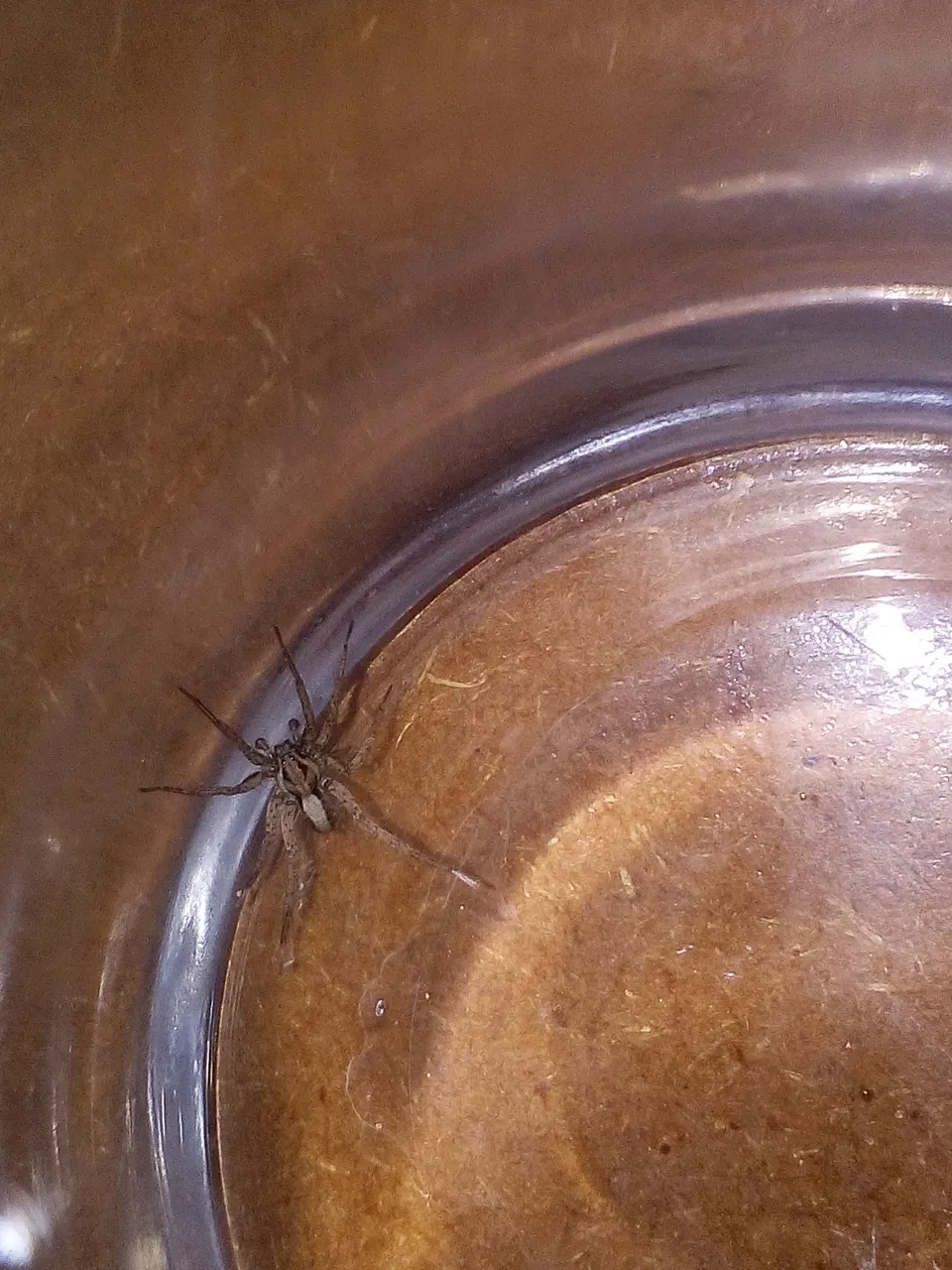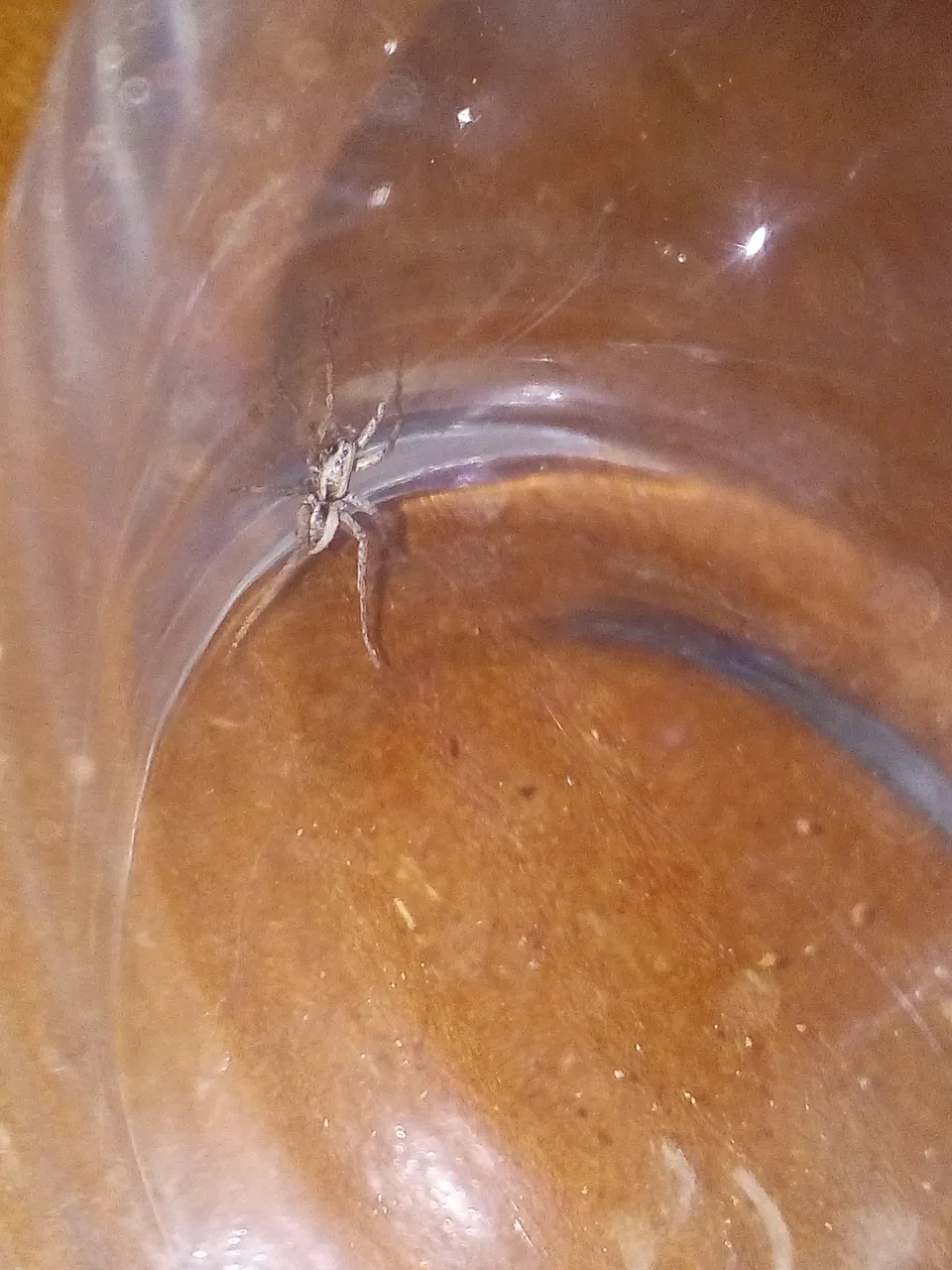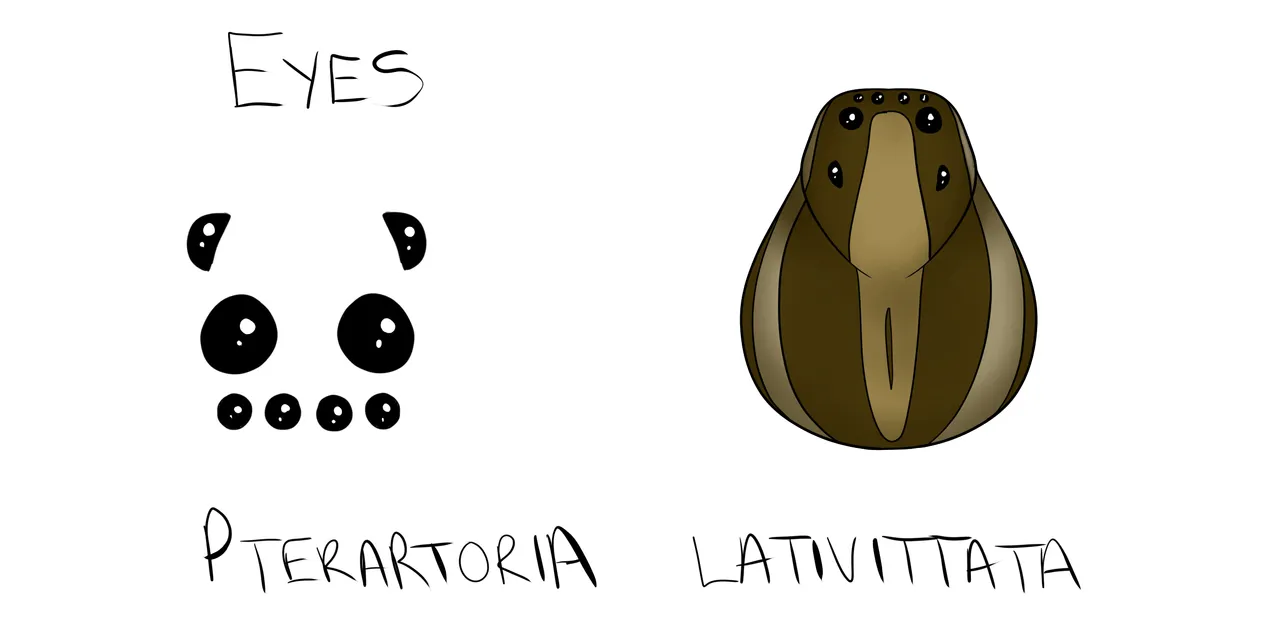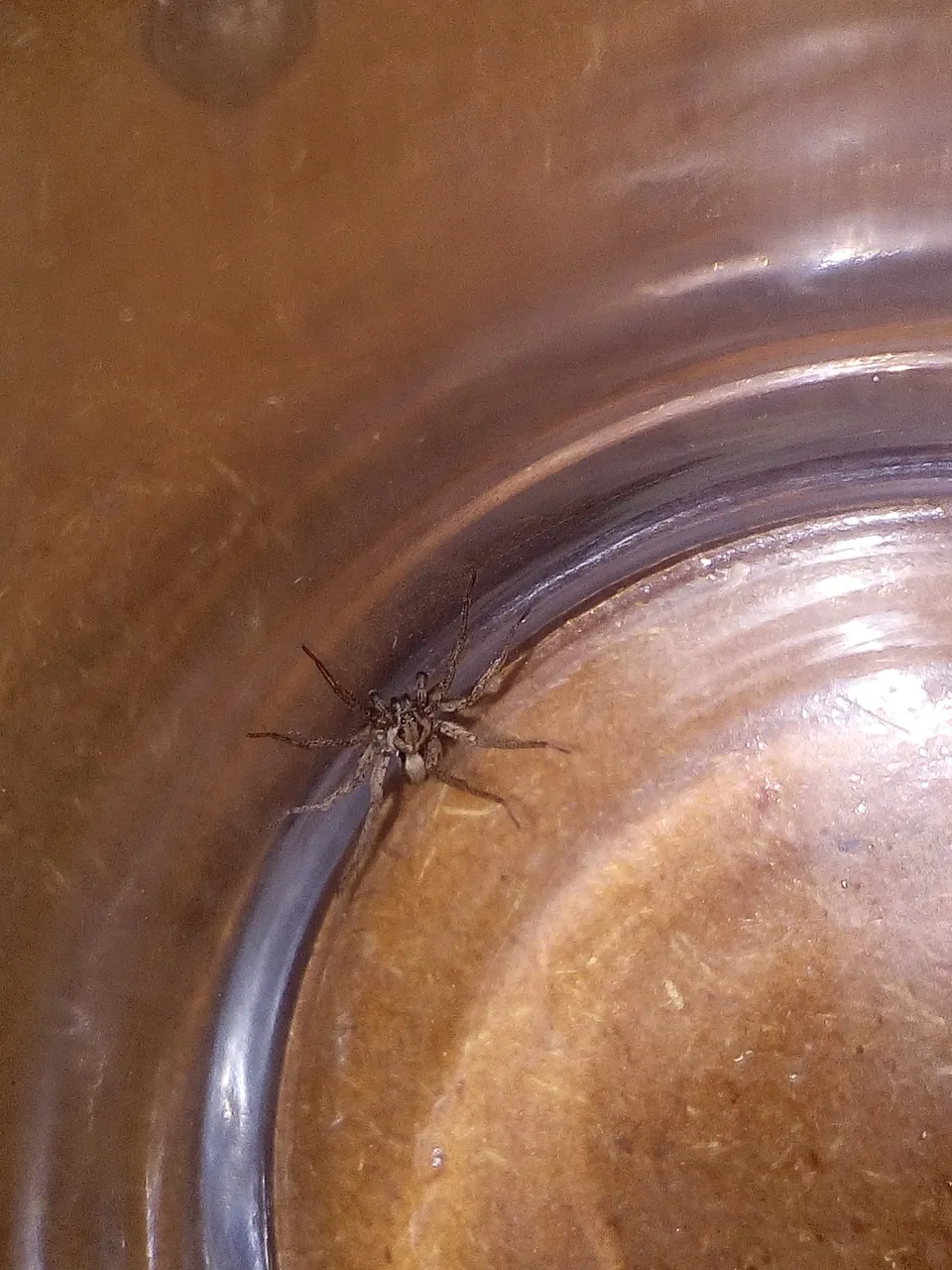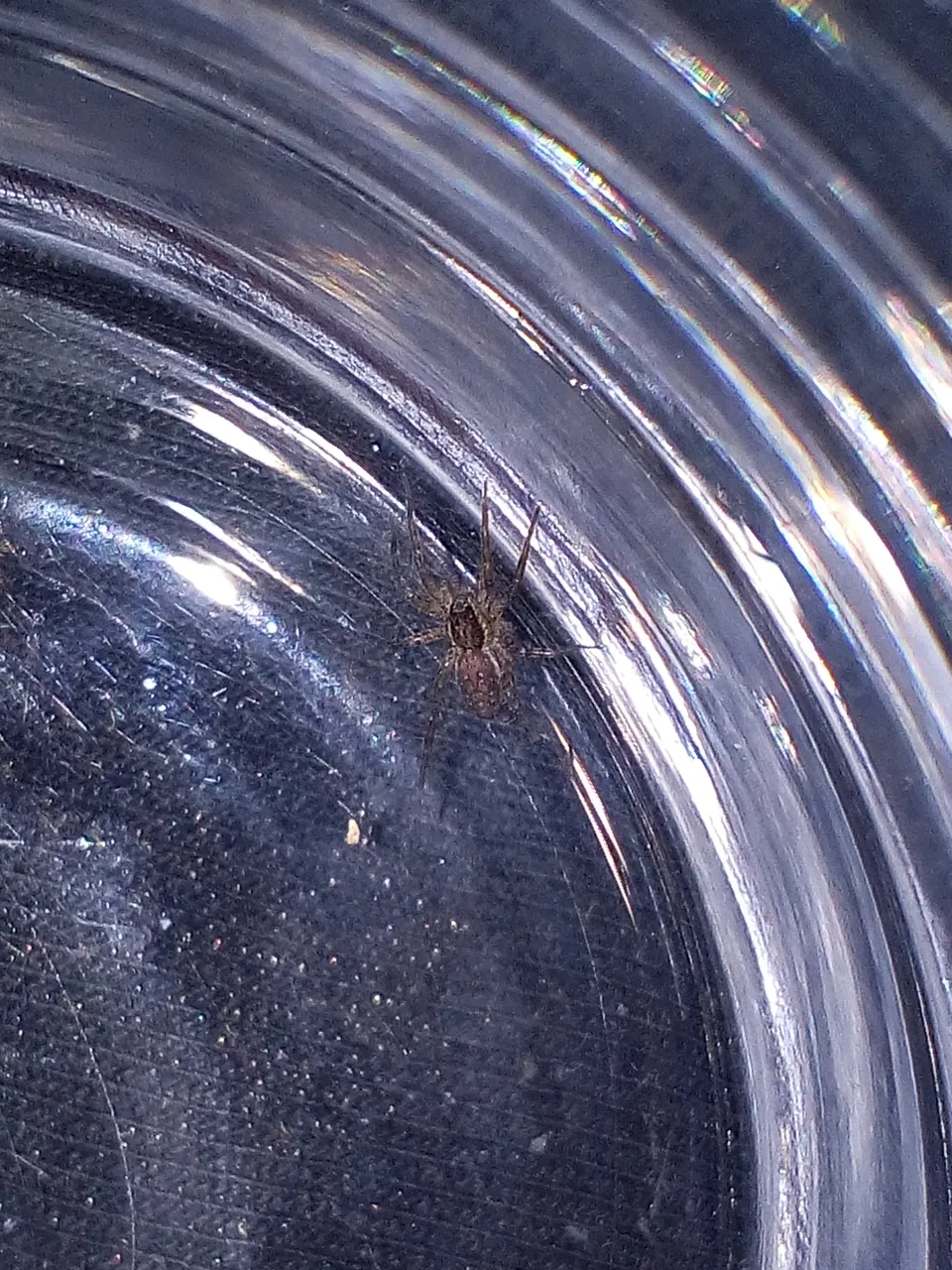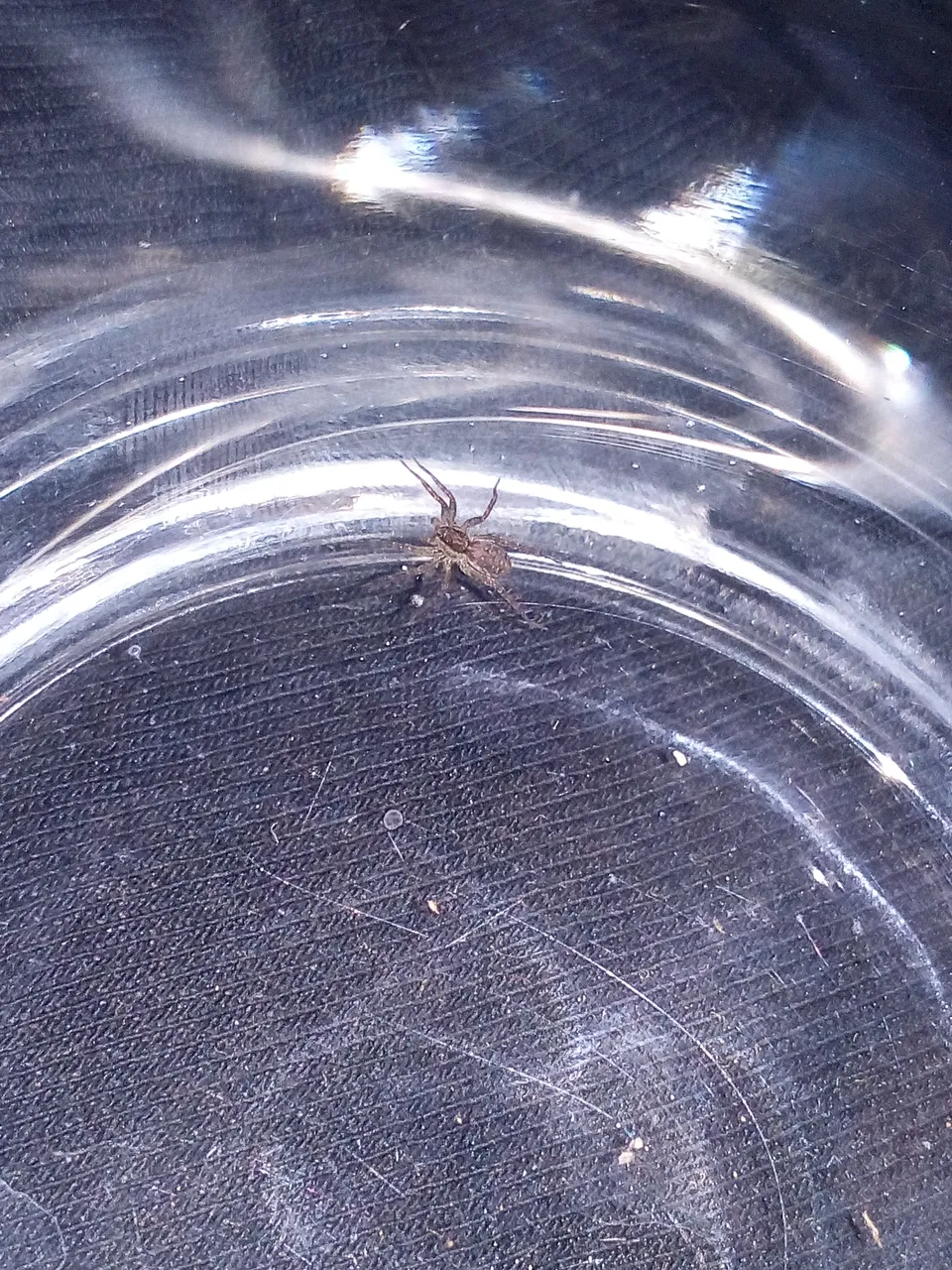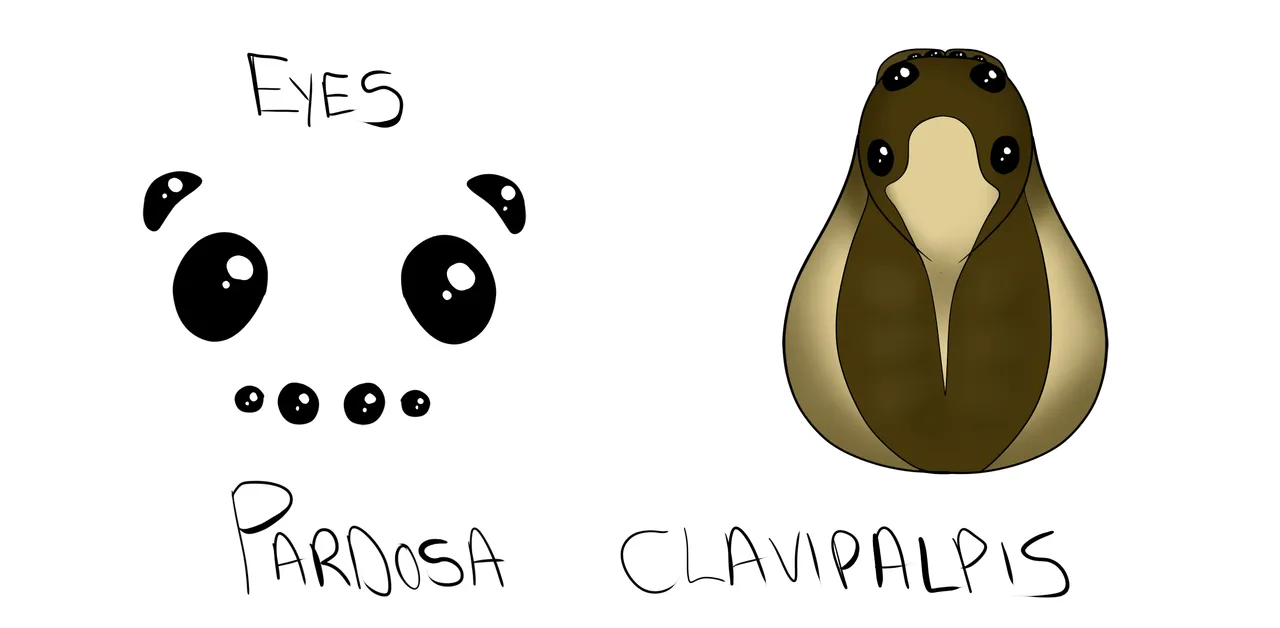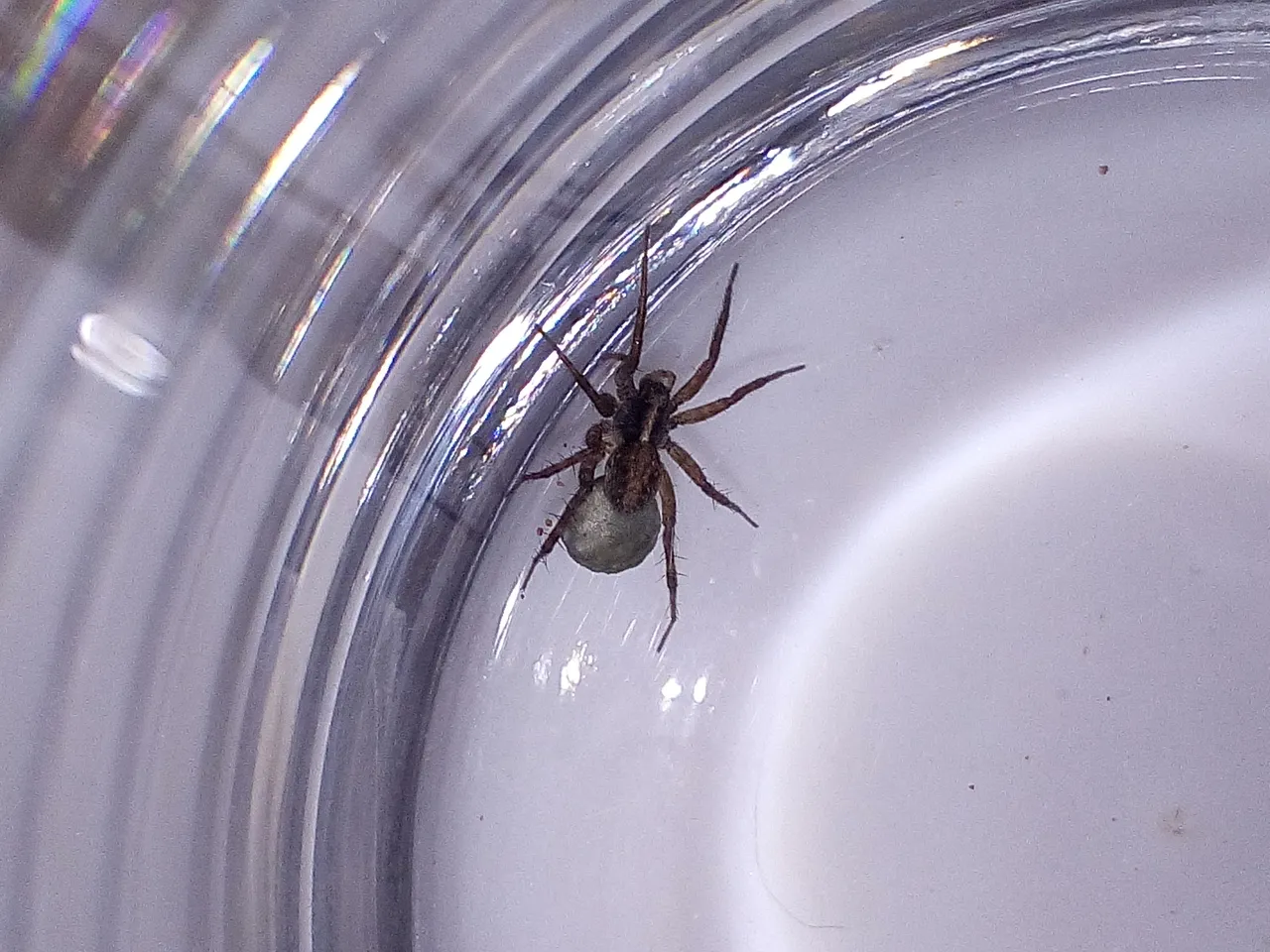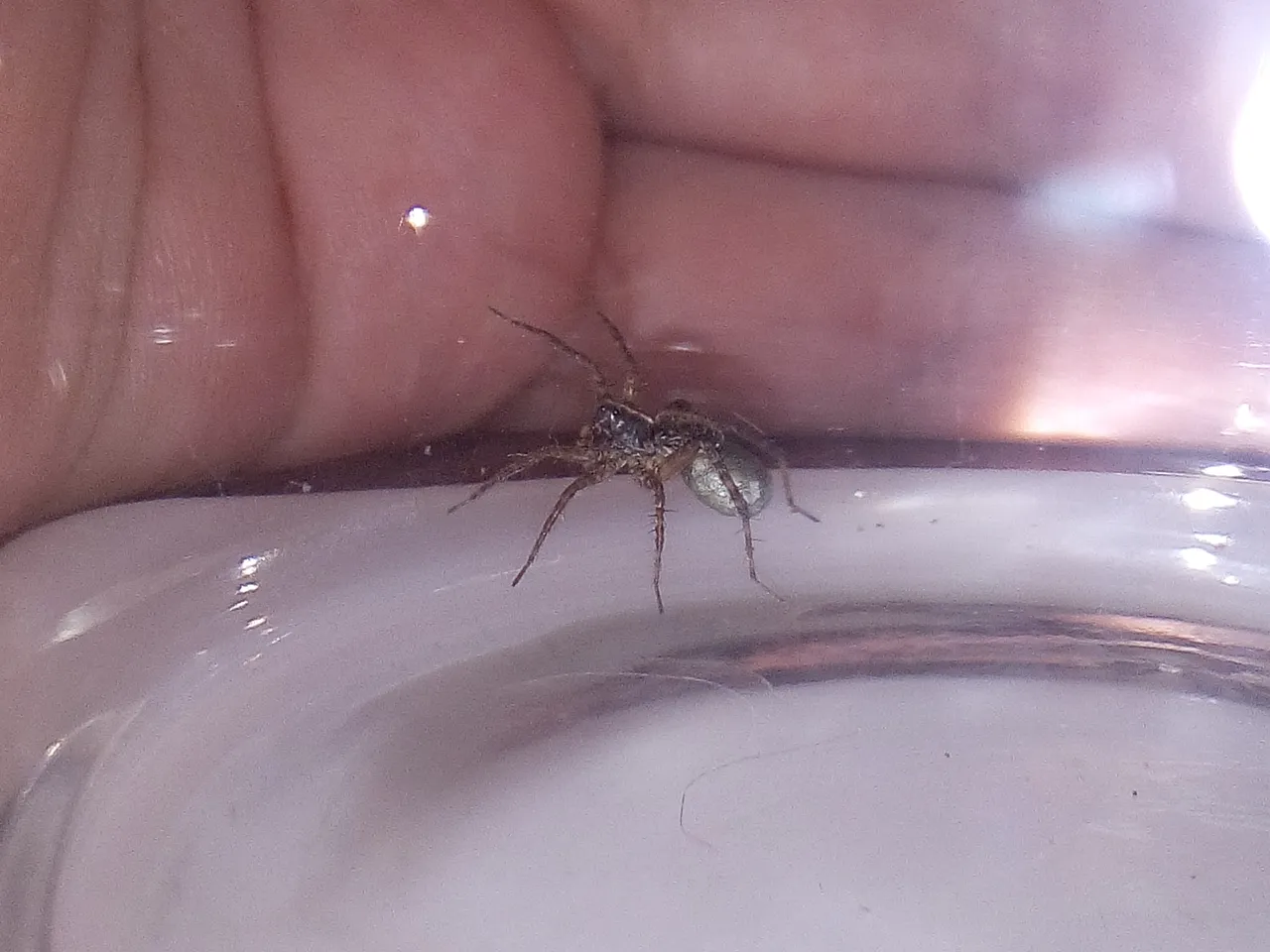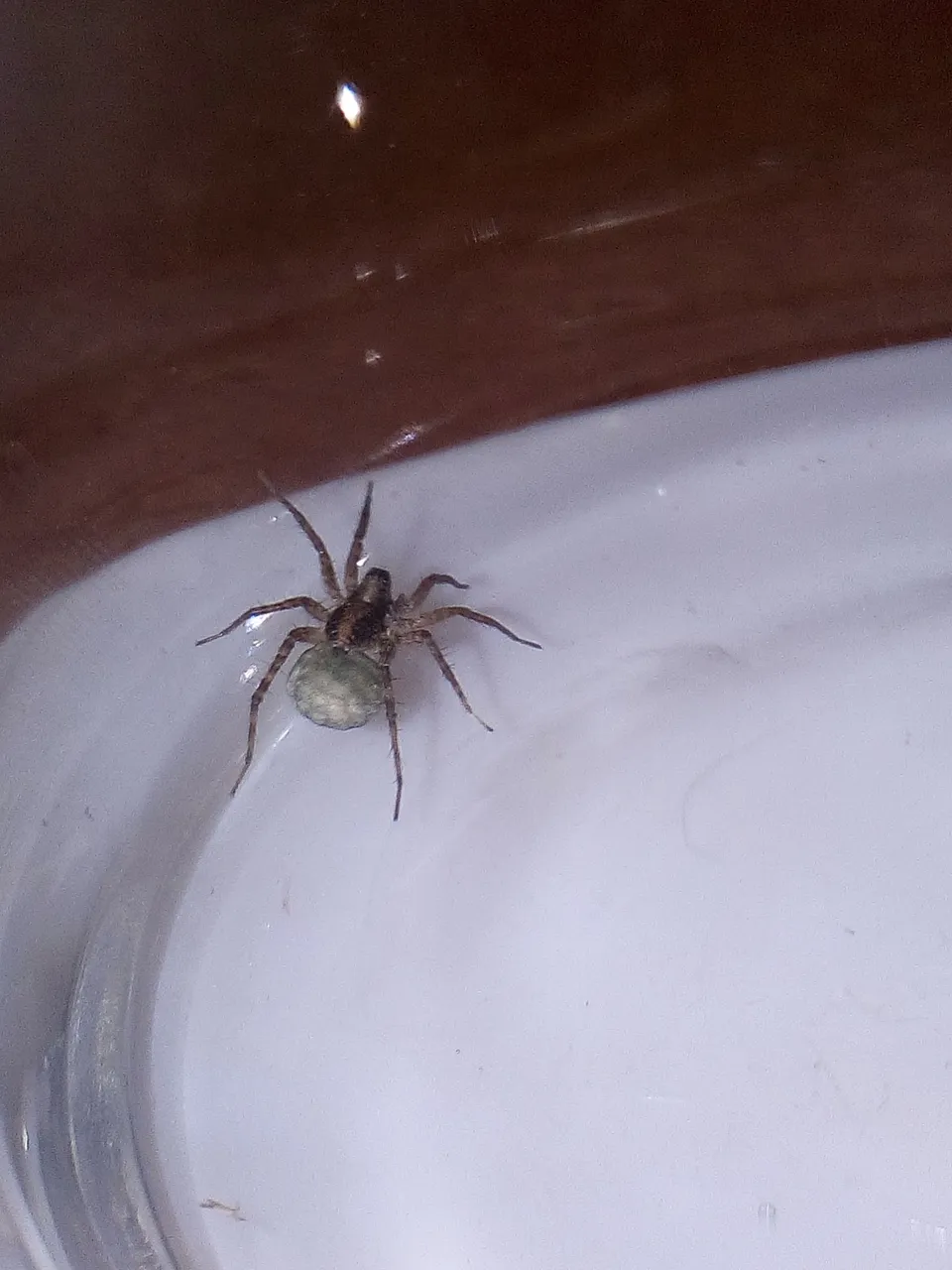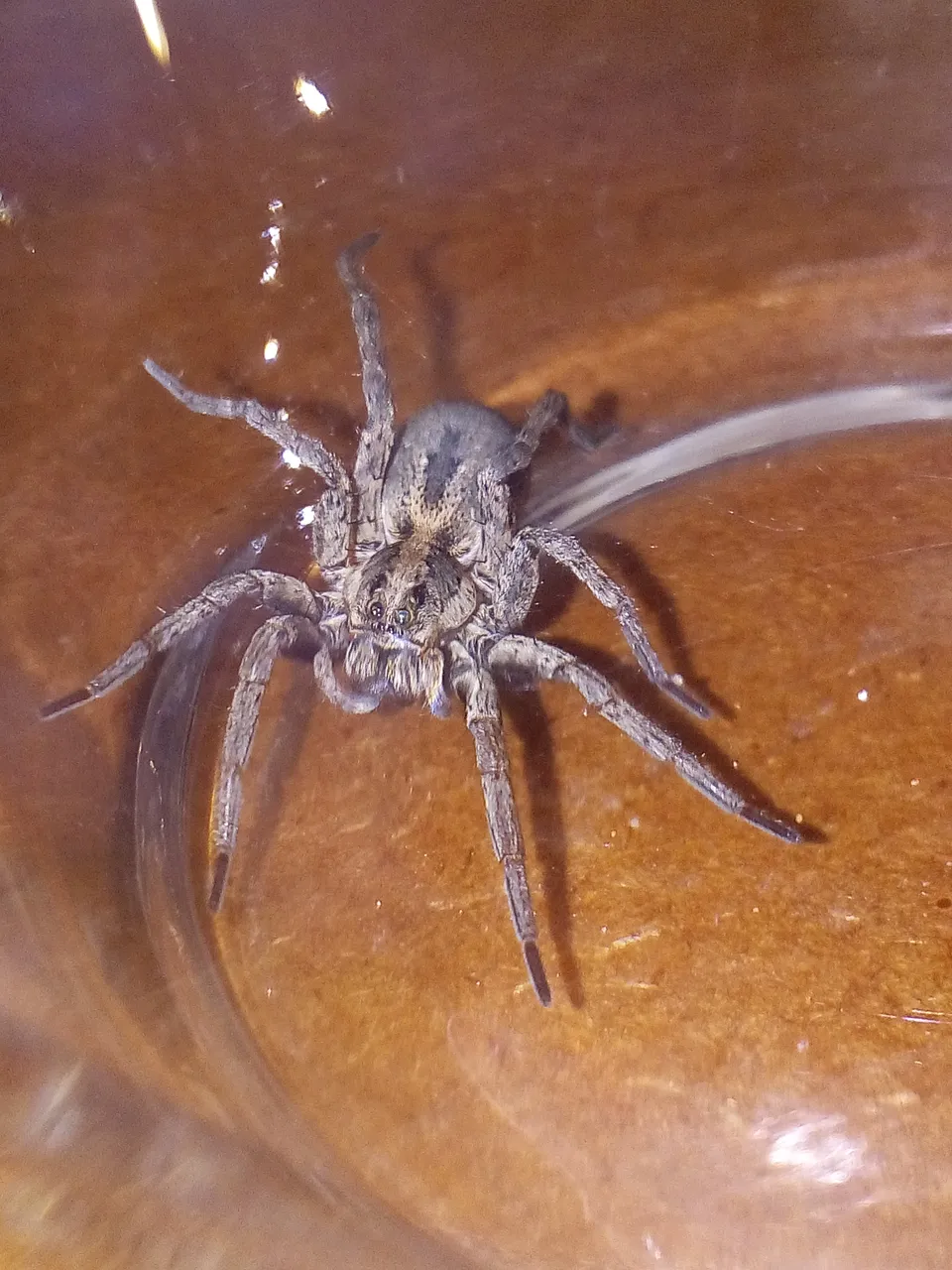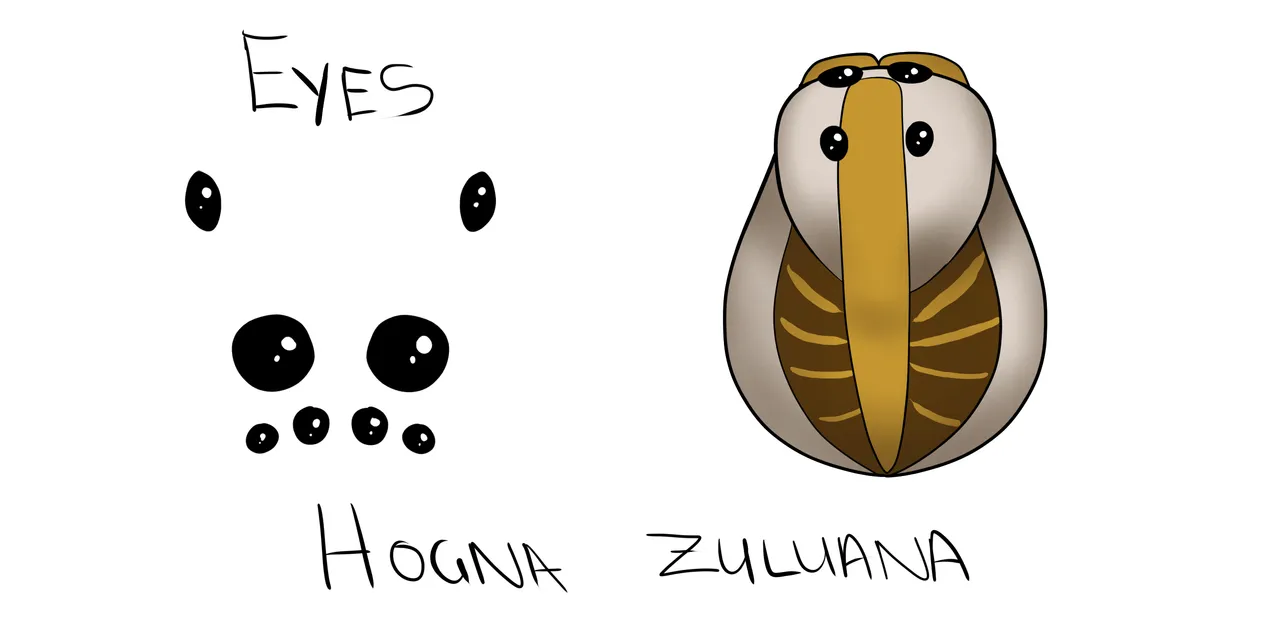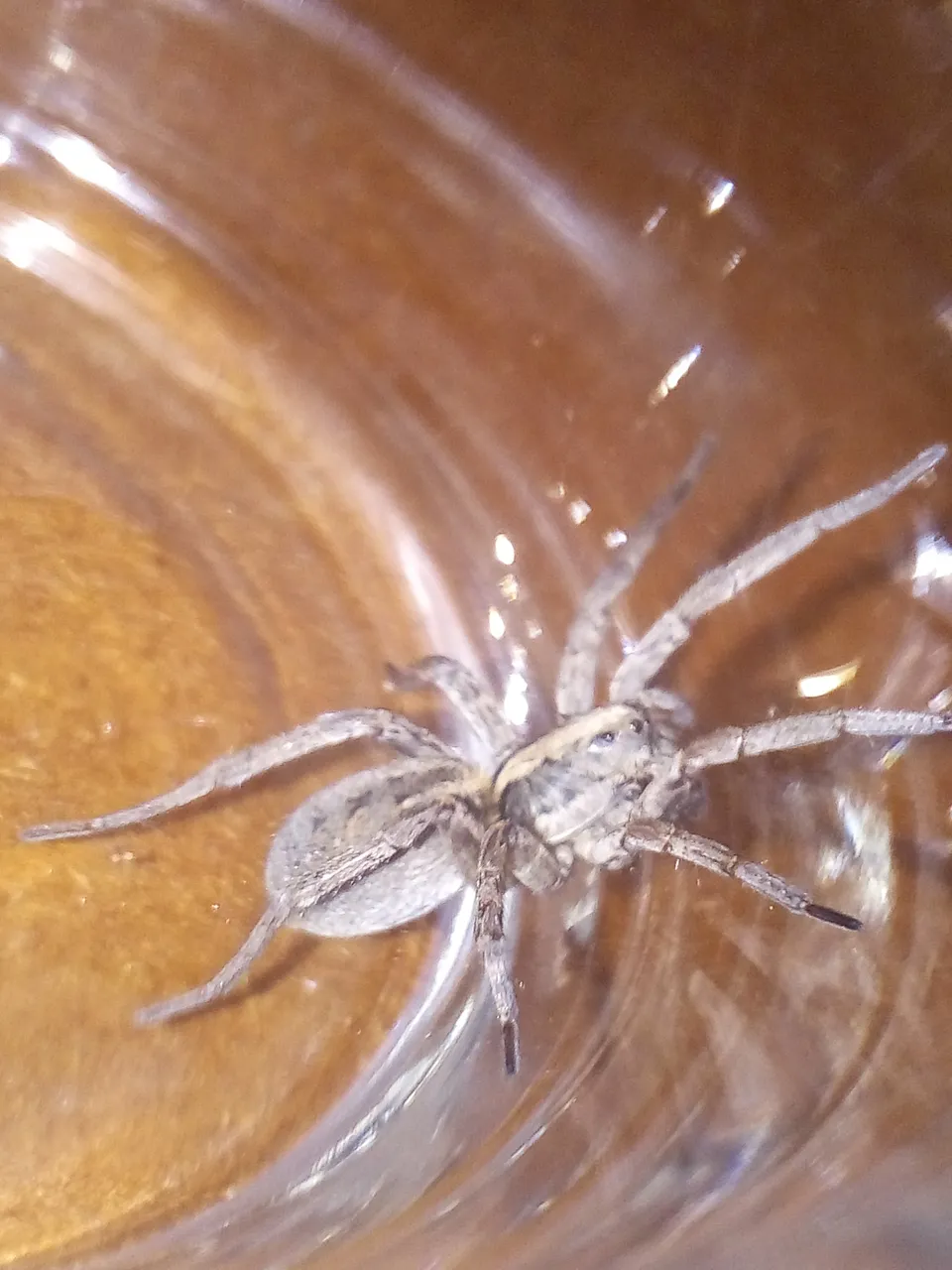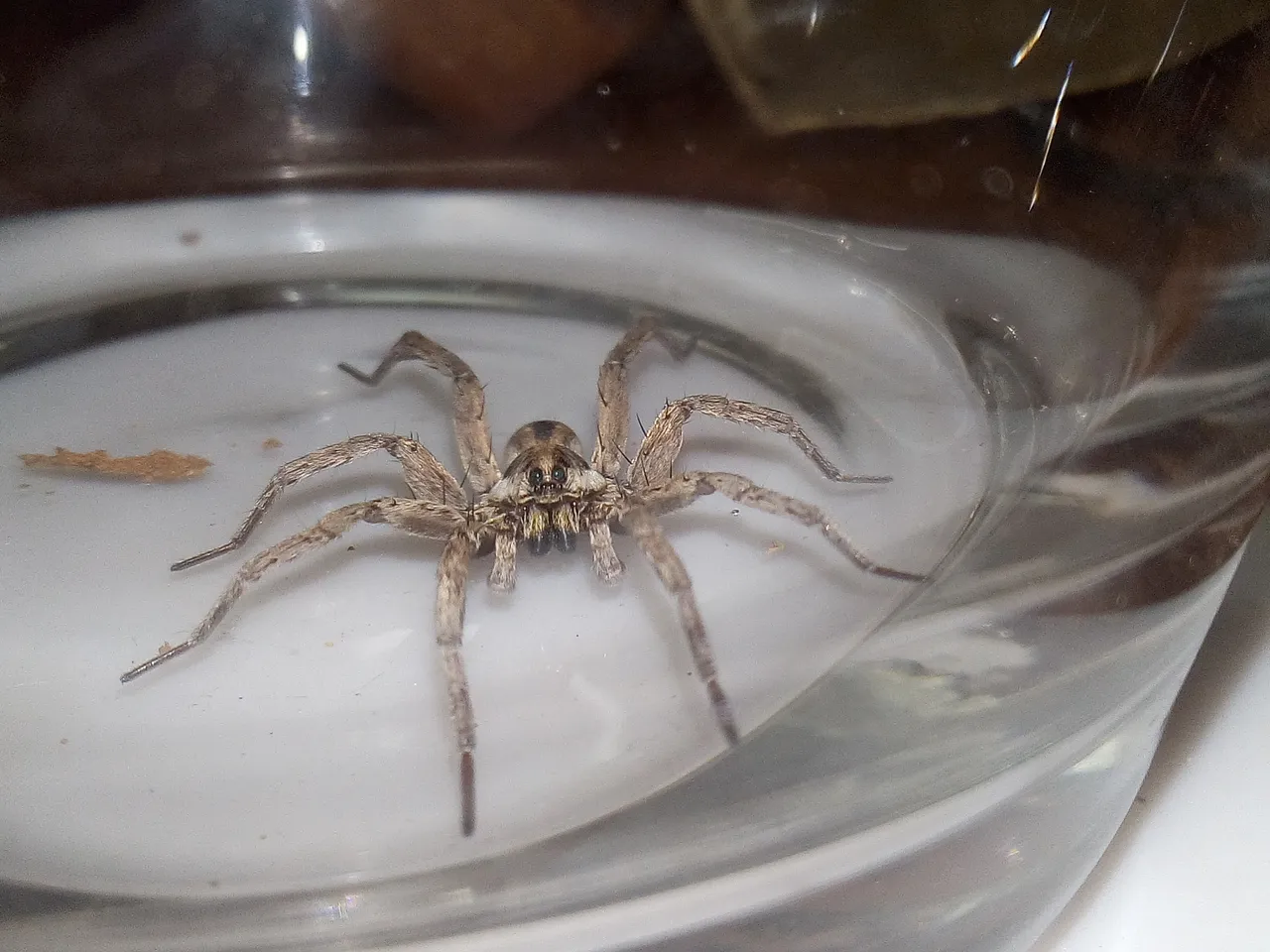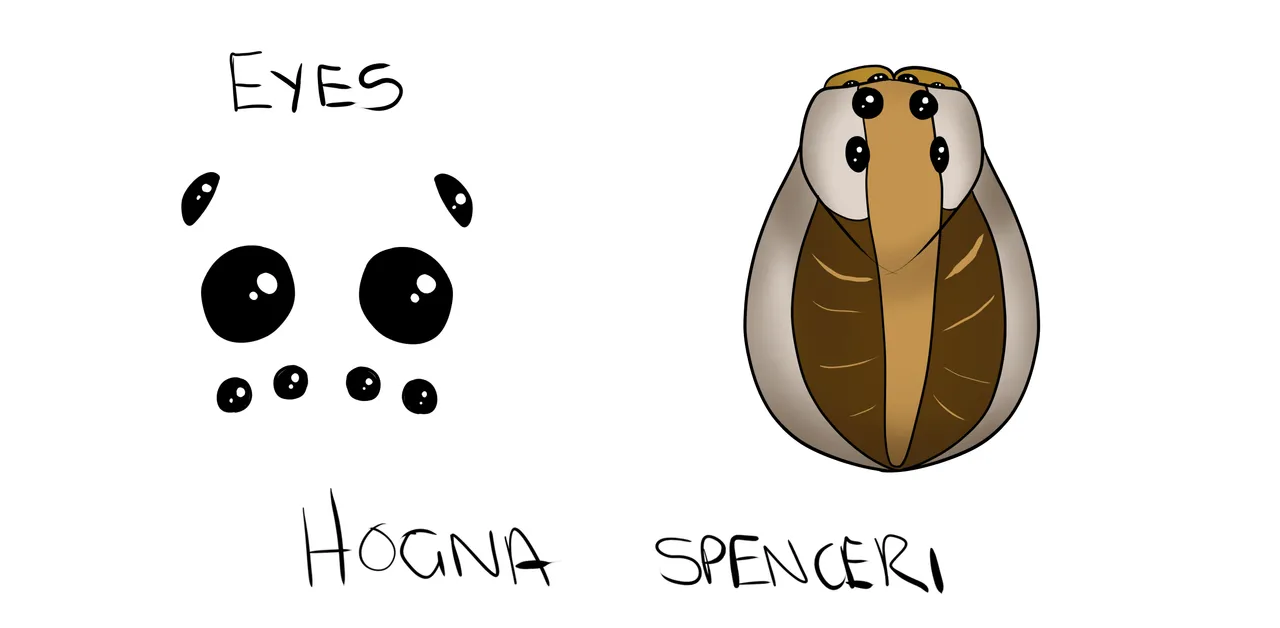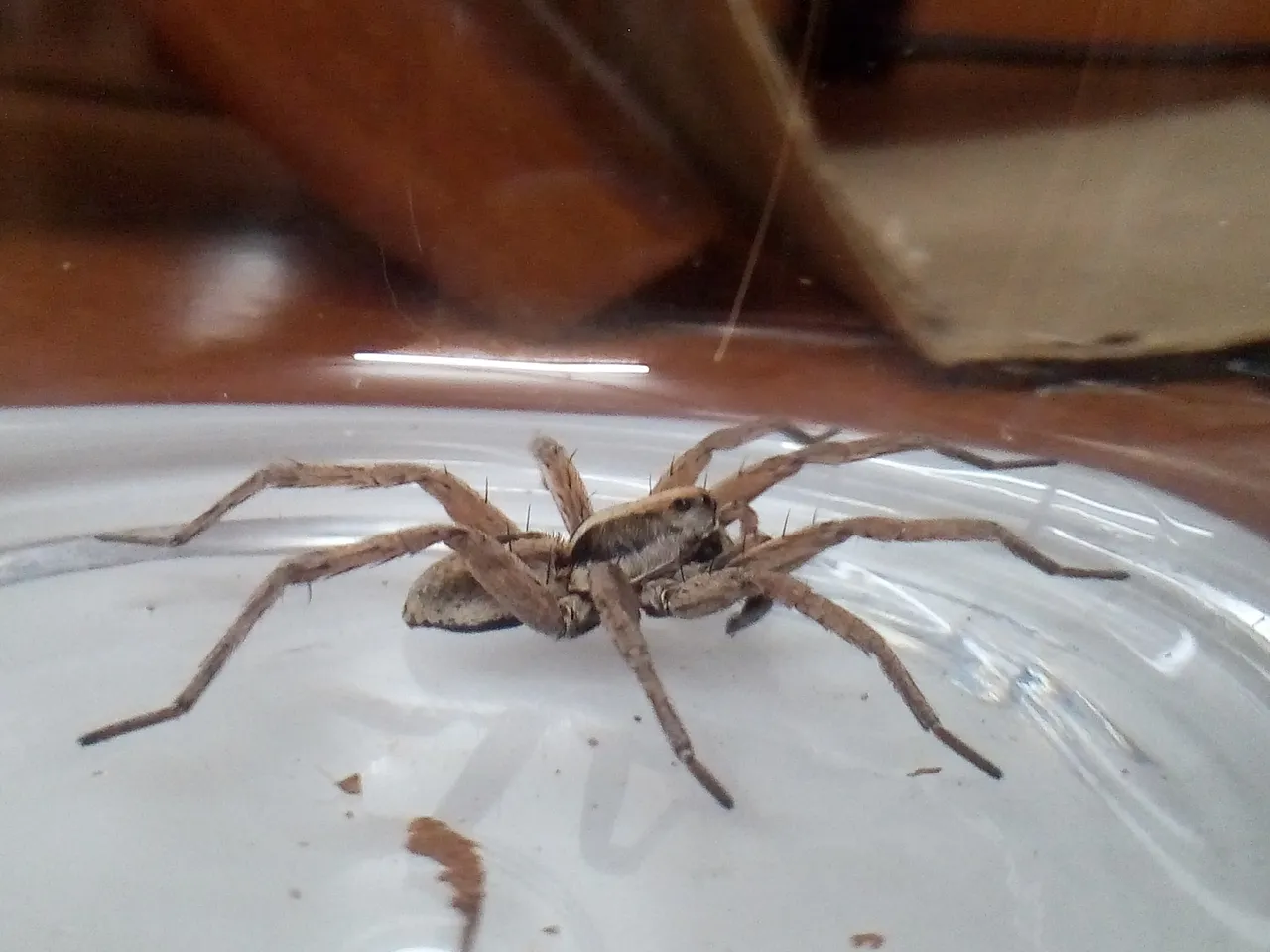Taxon:
- Class: Arachnida
- Order: Araneae
- Infra-Order: Araneamorph (true spiders)
- Family: Lycosidae
- Genus: Pterartoria
- Species: P. lativittata
Female
Unknown.
Male
Around 5mm in body length. Leg span of approximately 10mm diagonally.
Cephalothorax:
Carapace light greyish cream with two dark lines down centre from posterior median eyes, cephalic region raised. Sternum shield shape, black. Pedipalps same colour as carapace, mottled, with dark swollen tarsi that taper sharply. Anterior row of eyes straight, posterior medians close together.
Abdomen:
Thin oval that sharply tapers, same colour as carapace with two dark lines running down dorsal, faint chevron-like markings posterior centre. Ventral pale with tapering dark line in centre.
Legs:
Same colour as carapace, mottled, long. Tarsi darker.
ABOUT THE GENUS
These spiders are free-roaming hunters and are nocturnal. They are medium-sized spiders, averaging at around 6-7mm, with females generally being larger. The genus is native to South Africa, with at least 2 species occurring in the Northern Cape, and there are only 10 described species. Their legs are often long and thin with some strong spines, though not as much as in Pardosa wolf spiders.

